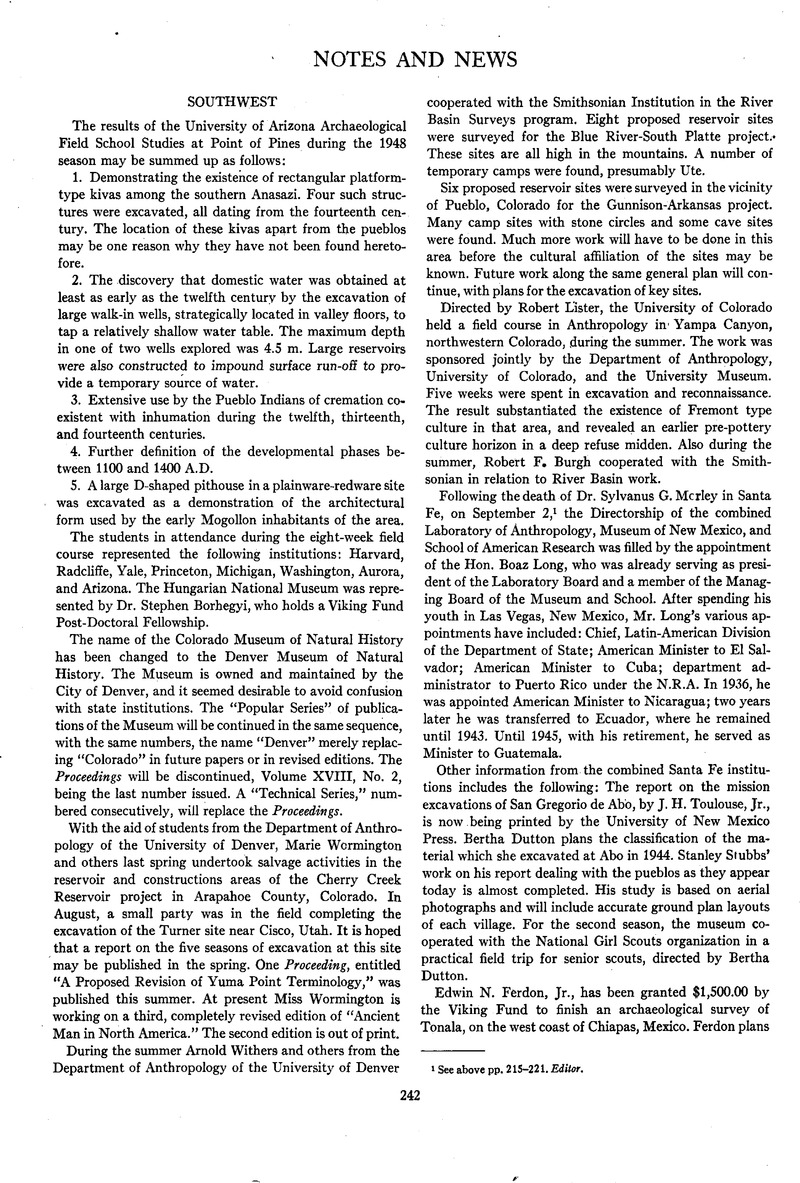No CrossRef data available.
Article contents
Notes and News
Published online by Cambridge University Press: 25 January 2017
Abstract

- Type
- Other
- Information
- Copyright
- Copyright © The Society for American Archaeology 1949
References
1 See above pp. 215–221. Editor.
2 As discussed below, pp. 246–7. Editor.
3 Published in the last issue, Vol. 14, No. 2, pp 103–16. Editor.
4 Douglas S. Byers, this journal, Vol. 1, No. 4, p. 326.
5 James B. Griffin, “Cultural Change and Continuity in Eastern United States Archaeology,” Papers of the R. S. Peabody Foundation for Archaeology, Vol. 3, Andover, 1946, p. 42. (See also p. 250 above. Editor.)
6 E. G. Squier, Notes on Central America, New York, 1855, p. 123; The States of Central America, New York 1858, p. 133; and “A Visit to the Goajiquero Indians,” Harper's Magazine, October, 1859, p. 608.
7 Wm. Duncan Strong, A. V. Kidder, II, and A. J. D. Paul, “Preliminary Report on the Smithsonian Institution-Harvard University Archaeological Expedition to Northwestern Honduras, “Smithsonian Miscellaneous Collections, Vol. 97, No. 1, pp. 118-125, Washington, 1936.
8 Longyear, John M., “Cultures and Peoples of the Southeastern Maya Frontie.,” Theoretical Approach to Problems, No. 3, Washington: Carnegie Institution, 1947, pp. 2–6, 12.Google Scholar
9 Strong, Kidder, and Paul, op. cit., pp. 62–75,119–25.
10 Op. cit., pp. 45–62, 119–25.
11 Ibid., and pp. 105–15.




